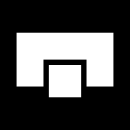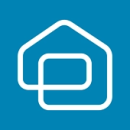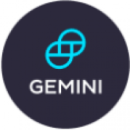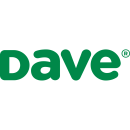
Emerging technologies like artificial intelligence and machine learning are slated to become huge drivers of revenue in the next few years. In fact, the AI market, which includes a wide array of applications such as robotics and natural language processing, is expected to reach $126 billion in global revenue by 2025, according to Statista.
And not only is revenue predicted to reach an all-time high, but so is the number of employment opportunities available to the masterminds behind these innovative technologies: Employment for engineers is expected to grow by 4 percent by 2024, according to the U.S. Bureau of Labor Statistics.
Statistics like these prove there is no time like the present for budding as well as senior-level engineers to get in on the action. Below, we connected with five local engineering leaders who shared their tech stacks, team cultures and the coolest projects they’re currently working on. And if you like what you read, you’re in luck, because these companies are actively hiring for a variety of engineering positions.
What they do: Mothership is a freight marketplace that connects shippers with local drivers for last-mile deliveries. The company also offers instant online quotes as well as real-time shipment tracking.
Mothership’s tech stack: “Our back-end services are Node applications built with Typescript,” Lawrence said. “We have a real-time database on Firebase, although we’re moving away from it in favor of PostgreSQL databases for our microservices. For event streams, we’ve been using Kafka. We deploy our backend applications to EKS. One of my favorite tools to leverage is Kubebuilder for creating Kubernetes Operators, which allow us to make our own in-cluster automation. This enables us to make developers’ lives as easy and self-servant as possible by reducing manual tasks.”
Making life easier for engineers through production: “Currently my team (platform) is tackling secrets management. We’re aiming to have a clean and easy local workflow to handle the encryption and decryption of configuration files, allowing engineers to manage their own secrets. Of course, we’re also developing automation so the encrypted configuration files get deployed at the same time as the application as part of our CI/CD pipelines. On top of that, we’re approaching the problem in such a way that we’ll be able to add and manage some access control policies. For instance, we’d like to restrict access to production secrets or isolate project secrets to specific teams.
“What we want isn’t available off the shelf with existing tools or applications, and we can unify the way secrets are dealt with locally and in-cluster. It’s something I could see us open-sourcing in the future.”
I get a deep sense of satisfaction when we make something a bit easier and more convenient for the engineers here.”
Learning as they grow: “A couple of really cool and unique aspects of our company culture that I particularly enjoy are our lunch and learns and our ‘307 Temporary Redirect’ engineering event. While anyone in the company can host a lunch and learn of their own, the engineers host a good deal of them. Sometimes the topics are technical. Oftentimes though, the topics are more general, like ‘A History of Magic’ or ‘Terror Birds (and other strange creatures).’ It’s a lot of fun, really informative and overall thought-provoking.
“307 Temporary Redirect is named as such because the first event had to be rescheduled and we didn’t have a name for it at the time. The core component of it is to provide means for the engineering department to connect now that everything is remote. We have a roundtable discussion about a variety of topics, a satirical news panel, game shows (“Jeopardy,” “Price Is Right”) and accompanying bingo cards. It’s a ridiculous amount of fun.”
What they do: AuditBoard is a cloud-based platform that helps businesses tackle risk, audit and compliance management.
AuditBoard’s tech stack: “At AuditBoard, we utilize a pretty modern tech stack with many of today’s cutting-edge technologies that are beloved for cost-saving purposes and ease of maintenance,” Tai said. “We’re hosted in multiple cloud providers, so being containerized and running on a cloud-agnostic solution like Kubernetes is a must. We are also very automation-focused and get excited by products like HashiCorp’s Terraform for automating infrastructure provisioning and follow a GitOps workflow to build, test and deploy.”
It’s rewarding to look back and appreciate that we’ve been able to grow in order to support our growing customer base.”
Working toward the future: “Continuing to meet the scale demands of the company has been the one long-lasting challenge that we continue to wrestle with. As we continue to grow and sign more customers, what has worked for us today may not necessarily work for us down the line. Our team needs to constantly innovate on how we can continue to be reliable and performant for our globally distributed customer base. It’s rewarding to look back and appreciate that we’ve been able to grow to support multitudes of more customers than when I initially joined with the same (if not better) reliability and efficiency. However, we can never become complacent, as we now have to focus on where we want to be with double or triple the number of customers we have today.”
Going customer-facing: “I’ve never really worked in a customer-facing role, so it’s been a unique experience for me as a software engineer working with our customer support and sales team and actually interface with our customers. I’ve appreciated hopping on calls with customers located across the globe and seeing improvements to their quality of life working within our AuditBoard product. Separately, I have great memories from the many team outing events our product, engineering and design team plans for us.”
What they do: Endpoint is a digital title and escrow company that’s designed to streamline the home closing process by making it simple, fast and transparent for everyone involved.
Endpoint’s tech stack: “We try to pick the right tools for any given job at Endpoint. This means we have a variety of great technologies all working together under the hood,” Davis said. “On the front-end side of things, we are using React and React Native to power our user interfaces. We also have an in-house design system built with Storybook in collaboration with our design team. On the back end, we’re migrating to microservices built in Node.js and Python, which are all running in AWS via Kubernetes.
“Since our web services support multiple products, each front end is connected through an orchestration layer that can apply product-specific business logic to our data and surface it through GraphQL. We’ve also just started introducing some fascinating automation technologies like OCR services using Microsoft Azure’s Form Recognizer and Robotic Process Automation with UIPath.”
We’re in an interesting sweet spot between a startup and a small company, so everything is still very much personal even as we grow.”
Focusing on impact: “Our automation efforts aim at taking some of the more tedious and repetitive parts of our manual workflows and shifting that work to bots. While a human aspect will always be necessary, and often preferable for our process to run smoothly, this work will allow our team to be more efficient and impactful. We’re currently analyzing our processes, training the models, building the bots, and designing the service interfaces that will tie all of this together with our products.”
Recognizing each other’s accomplishments: “The culture we’re building at Endpoint is definitely something special. We all know each other and there is a definite feeling of us being in this together, even though we’re very much apart due to the pandemic. We also make sure to recognize the accomplishments of our team members when they do something outstanding. There’s a new tradition we just started where we pass an ‘engineering MVP’ trophy around.
“The engineering team at Endpoint stands out in particular as having a great mix of diverse backgrounds. While we do have people with traditional CS and engineering training, we also have people who have worked in other fields like mathematics, education and art. Along with this mix of people comes a great interplay of varying viewpoints and interests that’s reflected in the way the team works together on projects.”
What they do: Gemini is a cryptocurrency exchange and custodian that allows customers to buy, sell and store crypto.
Gemini’s tech stack: “We use TypeScript with React on the front end and the back end is mostly written in Scala,” Kohn said. “We’ve started using OpenAPI to test services and endpoints as well as for documentation, and we’re just beginning to add Cypress to our testing suite.”
It feels really good when your co-workers get excited to use what you’ve built out.”
An emphasis on communication: “I’ve been working on building out internal tools that allow our teams to keep track of activity on Gemini’s website and ensure the site is being used in ways that comply with the law. It feels really good when your co-workers get excited to use what you’ve built out because it makes their lives a lot easier. And truly, I just really love working with my team. We have really great communication, whether that’s with task implementation or telling jokes and talking about our lives.”
Focusing on transparency: “There’s a lot of transparency in terms of how the company is doing, what our goals are and what’s ahead. In terms of my group of frontenders, we have really strong retention rates. Since I joined Gemini over two years ago, our group has more than doubled and I still work alongside almost all of the team members who were here when I started. It helps when you really like the people you work with.”
What they do: Dave is a banking app that’s designed to help users avoid overdraft fees. Upon signup, it offers users up to $100 in cash advance as well as side gigs and automated budgeting.
Dave’s tech stack: “We’re a mobile-first company so we are focused on building our mobile app for Android and iOS through React on the front end and building our infrastructure with Node.js, and TypeScript on the backend on Google Cloud,” Chou said.
“We’re growing very fast so our big focus with these programs is to scale and optimize user experience. We now have over 8 million customers, so we’re focusing on building the infrastructure to be able to support 10 times as many customers.”
Making everything work as one: “We recently created a single, unified experience for all the services we provide to make it smoother for our customers to navigate within the app. We started with cash advance and budgeting features but as we launched our banking product and others, we really wanted to focus on making everything flow together and create an easy-to-use experience even as we keep adding other services to our existing suite. It took a lot of research, design work and back-end processing — a true cross-functional effort.”
I really enjoy growing and scaling our product while growing and scaling our team.”
Leading the team through a period of growth: “Dave is a mission-driven company and this translates to the people who work here. People join for a purpose and everyone really supports Dave’s mission of advancing the collective potential of Americans. We’re experiencing tremendous growth, so a big focus for me has been leading the team through change. Our focus is to ensure we’re providing all the right tools, frameworks, processes and technology for our team to succeed. We also invested in a robust onboarding program to get newcomers up to speed and they learn about our culture and product.
“The pandemic has made connecting as a team a bit difficult, but we have a company-wide all hands as well as our own engineering all-hands meeting every week to make sure everyone is on the same page. Our team leaders have frequent check-ins with their teams to make our organization the most transparent and high-touch it can be.”














